Kenneth L. Gentry Jr.'s Blog, page 29
February 14, 2023
POSTMILLENNIALISM IN THE NEW TESTAMENT
PMW 202 3-013 by Kenneth L. Gentry, Jr.
3-013 by Kenneth L. Gentry, Jr.
In my last article I presented a brief summary of postmillennialism from the Old Testament. In this one, I will present a brief summary from the New Testament.
Immediately upon entering the New Testament record, we learn of the Messiah’s coming into history. He is “the Son of David, the Son of Abraham” (Matt 1:1) around whose birth we hear echoes of Old Testament victory theme, showing that his first coming begins the fruition of the promises to the fathers (Luke 1:46–55, 68–79).
Upon his entering into his public ministry, Christ immediately begins declaring that his kingdom is near. And he preaches thus because the prophesied “time is fulfilled” for it to come (Mark 1:14–15; Matt 3:2). During his ministry which is to crush Satan, we read of his power over demons presented as evidence that his kingdom has actually come (Matt 12:28). It does not lay off in the distant future, it does not await his second advent (Luke 17:20–21). After all, he claims to be king while on earth in the first century (John 12:12–15; 18:36–37).
Lord of the Saved
(by Ken Gentry)
A critique of easy believism and affirmation of Lordship salvation. Shows the necessity of true, repentant faith to salvation.
See more study materials at: www.KennethGentry.com
The Lord’s resurrection from the dead actually becomes the starting point for his formal kingly rule (Matt 28:18–20; Acts 2:30–31; Rom 1:3–4). And he explains that his kingdom is essentially spiritual in nature (John 18:36–37; Rom 14:17) and operates from within the heart (Luke 17: 20–21). We enter his kingdom through salvation (Col 1:12, 13; John 3:3). He rules his kingdom by his spiritual presence from heaven (John 18:36; Eph 4:8–14) and through the indwelling of the Holy Spirit (John 7:39; Rom 8:9; 1 Cor 3:16).
The New Testament promises that Christ will bring the world as a system to salvation (John 1:29; 3:17; 1 John 2:2) as the vast majority of the world’s population converts to him (John 12:31; 1 Tim 2:6). The stumbling of the Jews in rejecting Christ appears to be a disappointing reversal of God’s redemptive program. But their rejecting him opens up the prospect of mass conversions from among the Gentiles (Rom 11:12). Eventually the vast majority of Jews and Gentiles alike will convert, leading to the “reconciliation of the world” (Rom 11:15, 25; cp. 2 Cor 5:19).
Paul’s great eschatological chapter presents Christ as currently ruling and reigning from heaven (1 Cor 15:25a). He notes that the Lord will not return in his second advent until “the end” of history (1 Cor 15:24). At that time he ends his mediatorial reign and turns the kingdom over to the Father (1 Cor 15:28). Most significantly for the postmillennial hope, Paul states that Christ’s second advent will not occur until after he conquers his earthly enemies (1 Cor 15:24). He will conquer his last enemy, death, at his return when we arise from the dead (1 Cor 15:26).

Blessed Is He Who Reads: A Primer on the Book of Revelation
By Larry E. Ball
A basic survey of Revelation from an orthodox, evangelical, and Reformed preterist perspective. Ball understands John to be focusing on the destruction of Jerusalem and the temple in AD 70. Insightful. Easy to read.
For more Christian studies see: www.KennethGentry.com
February 10, 2023
POSTMILLENNIALISM IN THE OLD TESTAMENT
PMW 2023-011 by Kenneth L. Gentry, Jr.
In this article I will briefly summarize the case for postmillennialism from the Old Testament.
Scripture opens with the creation account, which teaches that man, the world, and the universe were created by God, not by random, impersonal, evolutionary forces. Within this opening narrative we discover God’s purpose for history. He creates man in his own image (Gen 1:26) as a material-spiritual being (Gen 2:7) and places him in the world to bring honor and glory to his Creator. He is called to exercise godly dominion throughout the world (Gen 1:26–30), beginning in Eden (Gen 2:15).
Consequently, the Christian should be predisposed to the historical victory postmillennialism expects. The Lord creates man and history for his glory; therefore, man and history will bring glory to him. Two powerful declarations in the New Testament emphasize this truth:
“For of Him and through Him and to Him are all things, to whom be glory forever. Amen.” (Rom 11:36)
“You are worthy, O Lord, to receive glory and honor and power; for You created all things, and by Your will they exist and were created.” (Rev 4:11)
This optimistic prospect becomes evident in God’s response to man’s fall into sin. The first promise of the gospel immediately after Adam’s fall promises that the seed of the woman will crush the head of the serpent (Gen 3:15). This hope weaves its golden cord throughout Scripture all the way through to Revelation 22.
The biblical record certainly expects struggle in history due to man’s fall, as we see in Genesis 3:15. But it is a struggle that leads to victory, rather than to deadlock, defeat, or despair. The Seed of the Woman (Christ) will conquer the Seed of the Serpent (Satan) — in time and on earth. This is a recurring truth in the biblical record; it defines biblical eschatology.
House Divided: The Break-up of Dispensational Theology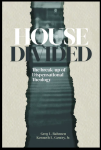 By Greg Bahnsen and Ken Gentry
By Greg Bahnsen and Ken Gentry
This book presents and defends Christian Reconstruction theology, particularly theonomic ethics and postmillennial eschatology. It does to by responding to dispensationalism’s social and exegetical theology.
For more educational materials: www. KennethGentry.com
We may trace the victory theme through the outworking of the God’s sovereign covenant. His administration of universal affairs is covenantal, unfolding in Scripture through a series of unified, successive, and judicially-related covenants. Hence, Paul speaks of “the covenants [plural] of the promise [singular]” (Eph 2:12).
The core redemptive covenant that impacts all of later Scripture is God’s covenant with Abraham. In the Abrahamic Covenant God promises the spread of salvation to “all the families of the earth” (Gen 12:1–3). It is mentioned frequently in the New Testament. Paul even declares of it: “The promise to Abraham or to his descendants that he would be heir of the world was not through the Law, but through the righteousness of faith” (Rom 4:13). And he expressly states that all believers in Christ — whether Jews or Gentile — are the seed of Abraham: “if you belong to Christ, then you are Abraham’s offspring, heirs according to promise” (Gal 3:29; cp. Rom 4:12, 16; Gal 3:6–9, 14).
After God’s covenant with Abraham is established and Israel enters her Promised Land, we discover that the later Old Testament revelation continues the victory theme. The Psalms are particularly filled with eschatological hope. For instance, Psalm 2, a key Psalm alluded to frequently in the New Testament, has God promising the Messiah: “Ask of me, and I will surely give the nations as Your inheritance, / And the very ends of the earth as Your possession” (Psa 2:8).
Psalm 22:27 anticipates a time when “all the ends of the earth will remember and turn to the Lord, / And all the families of the nations will worship before You.” Psalm 66:4 reflects this hope, promising that “all the earth will worship You, / And will sing praises to You; / They will sing praises to Your name.” Psalm 72:8 utters this hope: “May he also rule from sea to sea, / And from the River to the ends of the earth.”
Then as we move on to the writing prophets we find the same hope-filled anticipation. Perhaps one of the clearest prophecies appears in Isaiah 2:2–3: “In the last days, / The mountain of the house of the Lord / Will be established as the chief of the mountains, / And will be raised above the hills; / And all the nations will stream to it.” This will ultimately lead nations to hammer “their swords into plowshare, and their spears into pruning hooks” so that “nation will not lift up sword against nation” (Isa 2:4). But, of course, there are many more such prophecies.
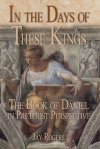
In the Days of These Kings: The Book of Daniel in Preterist Perspective
by Jay Rogers
This orthodox preterist analysis of Daniel is not a book, but a library. Extremely helpful for the postmillennial orthodox preterist.
For more study materials, go to: KennethGentry.com/
February 7, 2023
LOOKING FOR SOME POSTMILLENNIAL BOOKS?
PMW 2023-009 by Kenneth L. Gentry, Jr.
Unfortunately, as you wade your way through books on eschatology, you will find thousands and thousands and thousands of titles promoting dispensationalism. Some of these are very practical works that are actually able to name the coming Antichrist, which could prove helpful if are planning a trip to whatever county he will arise in. Still others are very insightful, giving you the latest date for the secret rapture (which is only know to televangelists). This is extremely valuable to anyone wanting to get in a nice vacation before all hell breaks lose at the disappearance of believers at that moment.
But when you look around for postmillennial works, you have your work cut out for you. Publishers like to make money, and doom-and-gloom sells better than work-and-effort. Thus, the number of modern postmillennial books are fewer.
However, by God’s grace more-and-more of them are coming out. Here are some that should prove helpful to anyone wanting to investigate the postmillennial hope.
Bahnsen, Greg L. Victory in Jesus: The Bright Hope of Postmillennialism. Texarkana, Ark.: CMP, 1999.
Bock, Darrell L., ed., Three Views on the Millennium and Beyond. Grand Rapids: Zondervan, 1999.
Boot, Joseph. The Mission of God: A Manifesto of Hope for Society. London: Wilberforce, 2016.
Roderick Campbell, Israel and the New Covenant. Tyler, Tex.: Geneva Divinity School, 1954 [rep. n.d.]).
Chilton, David. Paradise Restored: A Biblical Theology of Dominion. Ft. Worth, Tex.: Dominion Press, 1985.
Davis, John Jefferson., Christ’s Victorious Reign: Postmillennialism Reconsidered. Grand Rapids: Baker, 1986.
James A. Dejong, As the Waters Cover the Sea: Millennial Expectations in the Rise of Anglo-Amearican Missions 1640–1810. Laurel, Miss.: Audubon, 2006.
Gentry, Kenneth L., Jr. The Greatness of the Great Commission: The Christian Enterprise in a Fallen World. 2d. ed.: Chesnee, S.C.: Victorious Hope, 2013 (rep. 1993).
Gentry, Kenneth L., Jr. He Shall Have Dominion: A Postmillennial Eschatology. 2d. ed.: Chesnee, S.C.: Victorious Hope, 2009.
Gentry, Kenneth L. Jr.., Postmillennialism Made Easy. Chesnee, S.C.: Victorious Hope, 2009.
Gentry, Kenneth L., Jr., The Truth about Postmillennialism. Chesnee, S.C.: Victorious Hope, 2019.
Gentry, Kenneth L. ed., Thine Is the Kingdom: Studies in the Postmillennial Hope. Vallecito, Calif.: Chalcedon, 2003.
Harper, Joe, Lost Eschatology: Our Protestant Heritage Recovered: An Introduction to Historicist Postmillennialism (independent publication).
Kik, J. Marcellus. An Eschatology of Victory. Phillipsburg, N. J.: Presbyterian and Reformed, 1975.
Mathison, Keith A. Postmillennialism: An Eschatology of Hope. Phillipsburg, N.J.: Presbyterian and Reformed, 1999.
North, Gary. Millennialism and Social Theory. Tyler, Tex.: Institute for Christian Economics, 1990.
Rogers, Jay. The Harrowing of Hell: Rediscovering the Postmillennial Hope. Clermont, Fla.: Media House, 2020.
Rushdoony, R. J. God’s Plan for Victory: The Meaning of Postmillennialism. 3d. ed.: Vallecito, Calif.: Ross House, 2022.
Rushdoony, R. J., Thy Kingdom Come: Studies in Daniel and Revelation. Vallecito, Calif.: Ross House, 1998.
Sproul, R. C. The Last Days according to Jesus: When Did Jesus Say He Would Return? Grand Rapids: Baker, 2015.
Sandlin, Andrew, A Postmillennial Primer. Vallecito, Calif.: Chalcedon, 1997.
Wilson, Douglas, Heaven Misplaced: Christ’s Kingdom on Earth. Moscow, Ida.: Canon, 2008.
Click on the following images for more information on these studies:

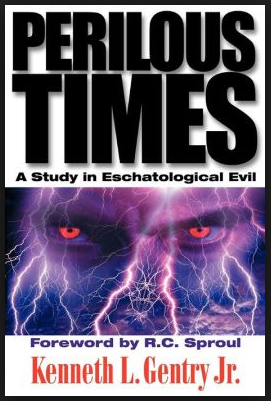
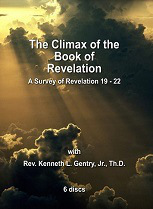
February 2, 2023
HYPERPRETERISM AND MELLO IN ACTS
P MW 2023-009 by Kenneth L. Gentry, Jr.
MW 2023-009 by Kenneth L. Gentry, Jr.
Hyperpreterism is a new theological paradigm that stands against universal historic Christian orthodoxy. It holds that the resurrection of the dead and the final judgment occurred in AD 70 with the destruction of the Jewish temple. Consequently, it also holds that earth history will never end (resulting in God’s tolerating a rebellious universe for ever and ever and ever). One method hyperpreterism uses to seek to topple the 2000 year old eschatology of Scripture is to focus on the Greek word mello.
In two previous articles (PMW 2022-014 and 015) I focused on Acts 24:15, which speaks of the resurrection of both the righteous and the wicked. The word mello appears in this text and is interpreted by hyperpreterists to mean: “there is about to be a resurrection of both the righteous and the wicked.”
In those articles I noted that a study of mello showed that it has several meanings, and does not simply mean “about to,” per the hyperpreterist approach. In fact, Greek scholar Daniel B. Wallace has written an important Greek grammar titled, Greek Grammar: Beyond the Basics: An Exegetical Syntax of the New Testament (1996). On p. 536 of this work he speaks of “the ambiguity of the lexical nuance of mello (which usually means either ‘I am about to’ [immediacy] or ‘I will inevitably’ [certainty]).” An ambiguous term is not sufficient to overthrow the historic Christian faith.
I then cited several leading Greek authorities, showing that because of this ambiguity, mello can mean, as per the Baur-Arndt-Gingrichi-Danker Lexicon: “1. to take place in a future point of time and so to be subsequent to another event, be about to… 2. to be inevitable, be destined, inevitable.” Others agreeing with this assessment include the Louw-Nida Greek-English Lexicon of the New Testament Based on Semantic Domains and the Exegetical Dictionary of the New Testament.
But how do the leading Bible versions translate this verse? And how should someone who does not know Greek evaluate this matter? I will provide a lengthy list of Bible versions and commentaries that avoid translating mello as “about to,” while preferring that it speaks only of futurity. Lone gunners who go against the near-universal consensus of Bible translation committees and world-class commentators should be suspect, especially when claiming that historic Christianity has missed this important issue for 2000 years. And I would not buy any ocean-front property in Arizona from them.
 The Harrowing of Hell (by Jay Rogers)
The Harrowing of Hell (by Jay Rogers)
This postmillennial book examines the power of the Gospel, not only to overcome all opposition, but to rise far above the powers of hell. The term “Harrowing of Hell” refers to idea that Christ descended into Hell, as stated in the Apostles’ Creed.
For more Christian educational materials: www.KennethGentry.com
Acts 17:31 in the standard translations
NASB: because He has fixed a day in which He will judge cthe world in righteousness through a Man whom He has appointed, having furnished proof to all men by raising Him from the dead.”
ASV: Inasmuch as he hath appointed a day in which he will judge the world in righteousness by the man whom he hath ordained; whereof he hath given assurance unto all men, in that he hath raised him from the dead.
Amplified Bible: because He has set a day when He will judge the inhabited world in righteousness by a Man whom He has appointed and destined for that task, and He has provided credible proof to everyone by raising Him from the dead.
Christian Standard Bible: because he has set a day when he is going to judge the world in righteousness by the man he has appointed. He has provided proof of this to everyone by raising him from the dead.
Contemporary English Version: He has set a day when he will judge the world’s people with fairness. And he has chosen the man Jesus to do the judging for him. God has given proof of this to all of us by raising Jesus from death.
English Standard Version: because he has fixed a day on which he will judge the world in righteousness by a man whom he has appointed; and of this he has given assurance to all by raising him from the dead
Good News Transaltion: For he has fixed a day in which he will judge the whole world with justice by means of a man he has chosen. He has given proof of this to everyone by raising that man from death!
Holman Christian Standard Bible: because He has set a day when He is going to judge the world in righteousness by the Man He has appointed. He has provided proof of this to everyone by raising Him from the dead
International Standard Version: Because he has set a day when he is going to judge the world with justice through a man whom he has appointed. He has given proof of this to everyone by raising him from the dead
KJV: Because he hath appointed a day, in the which he will judge the world in righteousness by that man whom he hath ordained; whereof he hath given assurance unto all men, in that he hath raised him from the dead
Lexham English Bible: because he has set a day on which he is going to judge the world in righteousness by the man who he has appointed, having provided proof to everyone by raising him from the dead.
Modern English Version: For He has appointed a day on which He will judge the world in righteousness by a Man whom He has appointed, having given assurance of this to all men by raising Him from the dead.
New Century Version: God has set a day that he will judge all the world with fairness, by the man he chose long ago. And God has proved this to everyone by raising that man from the dead!
New English Translation: because he has set a day on which he is going to judge the world in righteousness, by a man whom he designated, having provided proof to everyone by raising him from the dead.
New International Version: For he has set a day when he will judge the world with justice by the man he has appointed. He has given proof of this to everyone by raising him from the dead.
NKJV: because He has appointed a day on which He will judge the world in righteousness by the Man whom He has ordained. He has given assurance of this to all by raising Him from the dead
NRSV: Because he has fixed a day on which he will have the world judged in righteousness by a man whom he has appointed, and of this he has given assurance to all by raising him from the dead.
RSV: because he has fixed a day on which he will judge the world in righteousness by a man whom he has appointed, and of this he has given assurance to all men by raising him from the dead.
Wycliffe Bible: for that he hath ordained a day, in which he shall deem the world in equity, in a man in which he ordained, and gave faith to all men, and raised him from death [raising him from dead].
With this many Greek scholars and translation committees agreeing on the use of mello in Acts 17:31, we would be rather reckless to accept that this ambiguous term as sufficient to undermining historic Christianity. But there is more.
House Divided: The Break-up of Dispensational Theology By Greg Bahnsen and Ken Gentry
By Greg Bahnsen and Ken Gentry
This book presents and defends Christian Reconstruction theology, particularly theonomic ethics and postmillennial eschatology. It does to by responding to dispensationalism’s social and exegetical theology.
For more educational materials: www. KennethGentry.com
Acts 17:31 in Commentaries
A search of the leading evangelical commentaries on Acts shows that scholars do not adopt the interpretation that Paul was warning that the judgment was “about to” occur in history. Rather, they point out that his argument — which was presented to the Athenians far away from Jerusalem and unattached to Judaism — was that they should repent because the day of judgment coming upon them was sure and inevitable. This was not to be soon, and virtually unnoticeable and with no consequence for the folks in Athens.
For instance, universally-heralded Greek scholar A. T. Robertson, in his Word Pictures in the New Testament (3:291) writes: “Will judge (mellei krinein). Rather, is going to judge, mello and the present active infinitive of krino.”
Consider these the Acts commentaries in these commentary series, as well. Not one if them is even tempted to adopt the nearness interpretation:
Alford, Greek Text Commentary, 199.
Bock in the Baker Exegetical Commentary on the New Testament, p. 570.
Bruce in the New International Commentary on the New Testament, pp. 340–41.
Fernando in the NIV Application Commentary, p. 476.
Hendriksen in the New Testament Commentary, p. 639.
Lenski in the The Interpretation of the Acts of the Apostles, pp. 737–38.
Larkin in the IVP New Testament Commentary, p. 200.
Peterson in the Pillar New Testament Commentary, p. 502.
Meyer in the Critical and exegetical Handbook, p. 338.
Polhill in the New American Commentary, p. 376.
Marshall in the Tyndale New Testament Commentary, p. 290.
Schnabel in the Exegetical Commentary on the New Testament, p. 740
Witherington in the Socio-Rhetorical Commentary, pp. 331–32.
Conclusion
With this many scholarly commentaries agreeing on the use of mello in Acts 17:31, we would be rather reckless to accept this ambiguous term as sufficient to undermining historic Christianity. This should be of special interest to orthodox preterists. This is because one helpful argument for preterism in Revelation is the virtually universal translation of Revelation 1:1, 3 as referring to soon coming events.
[image error]For more information and to order click here.
" data-image-caption="" data-medium-file="https://postmillennialismtoday.files...." data-large-file="https://postmillennialismtoday.files...." class="alignright size-full wp-image-209" src="https://postmillennialismtoday.files...." alt="Navigating the Book of Revelation: Special Studies on Important Issues" />Navigating the Book of Revelation (by Ken Gentry)
Technical studies on key issues in Revelation, including the seven-sealed scroll, the cast out temple, Jewish persecution of Christianity, the Babylonian Harlot, and more.
See more study materials at: www.KennethGentry.com
January 31, 2023
PAUL AND OUR BODILY RESURRECTION (AGAIN)
PMW 2023-013 by Kenneth L. Gentry, Jr.
The Centrality of the Resurrection
In 1 Corinthians 15 we have Paul’s lengthy argument for and defense of the bodily resurrection. He opens this lengthy teaching section by tying it all to Jesus’ resurrection from the dead (vv. 1–4). He declares Jesus’ bodily resurrection to be one of the gospel matters “of first importance” (v. 3). Then he presents historical evidence for it by citing various appearances of the resurrected Christ to witnesses (vv. 5–8).
Then Paul shows how this matter is “of first importance” (1 Cor. 15:3) when he powerfully states: “if the dead are not raised, not even Christ has been raised; and if Christ has not been raised, your faith is worthless; you are still in your sins. Then those also who have fallen asleep in Christ have perished. If we have hoped in Christ in this life only, we are of all men most to be pitied” (vv.16–19).
Thus, for 2000 years Christianity has been rooted in the resurrection of the dead, beginning with Christ as the “first fruits” (v. 20). In fact, the writer of Hebrews speaks of the resurrection of the body as a “foundation” to Christian teaching (Heb. 6:1), as an “elementary principle” of God’s word (Heb. 5:12).
The Defeat of Death
So, having established the centrality of Jesus’ resurrection, Paul then declares that Christ “must reign [present] until [at some future time] He has put all His enemies under His feet” (1 Cor. 15:25). And then he immediately adds: “The last enemy that will be abolished is death” (v. 26). This is obviously not talking of the spiritual defeat of death by Christ, but rather the physical defeat of death by means of the future physical resurrection. Note two reasons supporting this observation:
First, the spiritual defeat of death which believers now enjoy in Christ had already happened before Paul’s ministry. In 2 Timothy 2:10 Paul states: this has “now has been revealed by the appearing of our Savior Christ Jesus, who abolished death and brought life and immortality to light through the gospel.” This defeat of death is not waiting for the temple to be destroyed in AD 70, as per hyperpreterist theology. We see this, for instance, in John 5:24: “Truly, truly, I say to you, he who hears My word, and believes Him who sent Me, has eternal life, and does not come into judgment, but has passed out of death into life.”

Perspectives on Pentecost (Richard Gaffin)
A careful examination of the New Testament teaching on the gifts of the Spirit. Makes a case for the cessation of tongues at the close of the apostolic era. Gaffin is professor emeritus of biblical and systematic theology at Westminster Theological Seminary, Philadelphia.
See more study materials at: www.KennethGentry.com
Second, Paul is speaking of this abolition of death as a feature of his argument for the bodily resurrection. Thus, “the future bodily resurrection accomplishes the defeat of death as the “last enemy” (1 Cor. 15:26). This is obviously a future reality, for Paul employs future elements in his argument: (1) He states that “the last enemy that will [future] be abolished is death” (v. 26). Thus, this has not yet occurred. (2) “When all things are [finally!] subjected to Him, then the Son Himself also will [finally] be subjected to the One who subjected all things to Him, so that God may be all in all” (v. 28).
The Physical Resurrection
Despite some widespread confusion over Paul’s argument in 1 Corinthians 15, he forcefully declares the physical nature of the future resurrection. He is responding to the Corinthians’ proto-gnostic understanding of the resurrection, regarding the question of “with what kind of body do they [the dead] come?” (v. 35). His presentation answers this question in several ways.
First, even before the question is raised in the text, he pre-emptivey calls Christ “the first fruits” of the dead (vv. 20, 23). And this is stated after his presenting Christ’s own historically-attested physical resurrection (1 Cor. 15:1–18; cp. Luke 24:39–40; John 20:25, 27). The concept of “first fruits” is derived from the ancient practice of harvesting. The first fruits of a crop are exactly like the final, full harvest of the crop — except that they are first. The first fruit of corn does not produce wheat or barley.
Second, Paul provides three analogies regarding resurrected bodies. (1) An agricultural analogy. He gives the example of grain “perhaps of wheat or of something else” (1 Cor. 15:37). God providentially gives “to each of the seeds a body of its own” (v. 38). And we know a physical seed does not produce an immaterial fruit.
(2) An animal analogy. Paul notes the different kinds of flesh characterizing different animals: “all flesh is not the same flesh, but there is one flesh of men, and another flesh of beasts, and another flesh of birds, and another of fish” (1 Cor. 15: 39). Again, though the flesh of different animals are different from each other, they are not different from themselves: they remain “flesh.”
(3) An astronomical analogy. He mentions “there is one glory of the sun, and another glory of the moon, and another glory of the stars; for star differs from star in glory” (1 Cor. 15:41). He does not state that their glory is something other than light — for they all have light. However, they all have light to greater and lesser degrees.
Then he links these analogies to his argument for our resurrection bodies. The point he is making is: “So also is the resurrection of the dead. It is sown a perishable body, it is raised an imperishable body; it is sown in dishonor, it is raised in glory; it is sown in weakness, it is raised in power” (1 Cor. 15:42–43). Not one of these analogies contrasts a transformation from physical to spiritual, from matter to spirit.
Thus, our resurrection will involve the very body that is sown; there will be continuity though a greater glory. The body will be sown as perishable, dishonorable, and weak. But that very body is raised imperishable, honorable, and powerful. He does not say that the body is sown as a physical entity and raised as an immaterial one.
Why Not Full-Preterism? by Steve Gregg
This work exposes some of the key flaws in Hyperpreterism by someone who has formally debated them. Much insightful material for those who might be tempted to forsake historic Christian orthodoxy.
For more Christian educational materials: www.KennethGentry.com
The Spiritual Body
But now we come to the next verse, the verse that confuses so many. Here Paul declares that the body “is sown a natural [psuchikon] body, it is raised a spiritual [pneumatikon] body. If there is a natural body, there is also a spiritual body” (1 Cor. 15:44). This sounds like the physical body that dies is transformed into something altogether different: a spiritual body. But that is not the case at all.
A surface, non-contextual reading leaves the impression that Paul is declaring the resurrection body will be ethereal/spiritual rather than material/physical. This results from naively plucking this text from its broader context without understanding what Paul is doing and what he is arguing against.
What Paul is actually saying in these verses is that in the resurrection our bodies will be fully and perfectly controlled by the Holy Spirit. This is contrary to our present control by animal appetites that are necessary for keeping us alive. In fact, even the word translated “natural” (1 Cor. 15:44) is psuchikon which is from psuche that is usually translated “soul” (e.g., Matt. 10:28; 16:26; 26:38; 2 Cor. 1:23; 12:15). In Scripture, physical people in this life can be described as “spiritual.” In fact, even in this very epistle, Paul uses the word “spiritual” to describe people who are clearly physical.
For instance, consider 1 Corinthians 2:14–15. There we read that “a natural man does not receive the things of the Spirit of God for they are foolishness to him, and he is not able to know them because they are spiritually discerned. But the spiritual one [pneumatikos] discerns all things.” The NIV translates “spiritual one” as “the person with the Spirit,” which is not literal but helpfully shows Paul is speaking of Spirit-controlled human beings in this life. That is, these are physical human beings who are moved by the Holy Spirit so that he calls them “spiritual.”
The same is true in 1 Corinthians 3:1, which reads: “I, brethren, could not speak to you as to spiritual [pneumatikois] men, but as to men of flesh, as to infants in Christ.” And in 1 Corinthians 14:37: “If anyone thinks he is a prophet or spiritual [pneumatikos], let him recognize that the things which I write to you are the Lord’s commandment.” Also see Paul’s use of “spiritual” in Galatians 6:1: “Brethren, even if anyone is caught in any trespass, you who are spiritual [pneumatikos], restore such a one in a spirit of gentleness.”
How often today do Christians refer to someone as a “spiritual” person! But we do not mean that they are non-material beings. Likewise, when we speak of a Coca-Cola can, we are not saying that the can is made out of Coca-Cola. Rather, we mean that it is filled with Coke — much like the “spiritual body” being filled with the Spirit in a dramatic and glorious way that prevents it from perishing and causes it to be glorious and powerful (1 Cor. 15:42–43).
Thine Is the Kingdom
(ed. by Ken Gentry)
Contributors lay the scriptural foundation for a biblically-based, hope-filled postmillennial eschatology, while showing what it means to be postmillennial in the real world.
See more study materials at: www.KennethGentry.com
January 26, 2023
ESCHATOLOGY & CHRISTIAN WORLDVIEW
By Kenneth L. Gentry, Jr.
Before one actually begins considering eschatology per se, he must understand its significance for the Christian worldview. Though there are many things that could be said (and have been!), I believe we should at least reflect on three important observations regarding Christ’s second coming (which ends temporal history).
FIRST, THE SECOND COMING EXALTS CHRIST’S VICTORY IN REDEMPTION
When the Lord came to earth in the first-century, he came in a state of humility in order to suffer and die. Paul expresses this as follows: “being found in human form, he humbled himself by becoming obedient to the point of death, even death on a cross” (Phil 2:8; cp. Matt 1:21; Luke 19:10).
But Scripture does not leave him suffering on the cross or lying in the tomb. Rather, it presents his ultimate glorification in heaven through three steps: resurrection, ascension, and session (being seated at the right hand of God). Ultimately his mediatorial rule over temporal history will end at his return, when he will resurrect and judge all men and establish the final order. As Paul puts it: “God has highly exalted him and bestowed on him the name that is above every name, so that at the name of Jesus every knee should bow, in heaven and on earth and under the earth, and every tongue confess that Jesus Christ is Lord, to the glory of God the Father” (Phil 2:9–11).
Yet as Hebrews points out: “at present we do not yet see everything in subjection to him” (Heb 2:8b). So then, Christ’s second coming is necessary for concluding his redemptive victory.
The Truth about Postmillennialism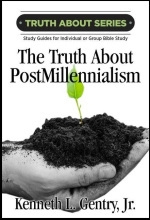 By Ken Gentry
By Ken Gentry
A group Bible study guide for explaining the optimistic prophetic hope for this world to be accomplished before Christ’s Second Coming. Establishes the postmillennial system in both the Old and New Testaments. Touches on key eschatological issues, such as creation, covenant, interpretive methodolgy, the great tribulation, the Book of Revelation, the Jewish Temple, and more. It presents and answers the leading objections to postmillennialism.Twelve chapters are ideal for one quarter of Sunday School.
See more study materials at: www.KennethGentry.com
SECOND, THE SECOND COMING COMPLETES GOD’S PLAN FOR HISTORY
In his first-century work, Christ conquers sin (Heb 10:11–14), death (2 Tim 1:10), and the devil (Heb 2:14). Yet all three evils remain with us today (Rom 7:18–25; 1 Pet 5:8–9), though as defeated foes. Consequently, Christ has won the victory, yet is in process of finalizing the victory.
This is much like our having been legally sanctified in the past by Christ’s death for us (Heb 10:14), continuing to be sanctified in the present as we grow in grace (Rom 6:19–22), and finally being wholly sanctified at the resurrection when we enter our final estate (1Thess 5:23). Likewise, Scripture presents Christ’s victory in three phases: He vanquishes these enemies legally before God’s throne in his first-century redemptive work (Col 1:13–14; 2:13–15). He continues vanquishing them historically through the gospel’s progress (Acts 26:18; 1 Cor 15:20–23). He will ultimately vanquish them eternally at his second advent, when he concludes history (Rom 8:18–25; Rev 20:10–15).
Thus, we see that Christ’s return in great glory to effect the final judgment is necessary for completing God’s redemptive plan. Otherwise sin would never finally be banished from the universe, and God would have to deal with it forever and ever, with no final concluding of the matter.
THIRD, THE SECOND COMING BALANCES REVEALED THEOLOGY IN SCRIPTURE
This glorious doctrine not only finalizes Christ’s redemptive victory and completes God’s historical plan. But it also provides us with a full-orbed doctrinal system balancing out majestic biblical truths.
Were it not for the second advent we would:
• have a creation (Gen 1:1; Heb 11:3) without a consummation (Acts 3:20–21; Rev 20:11), resulting in an open-ended Universe (1 Cor 15:23–24; 2 Pet 3:3–4);
• have a world eternally groaning (Rom 8:22; 2 Cor 5:1–4), without any ultimate glorious perfection (Rom 8:21; 2 Pet 3:12–13);
• have a Savior quietly departing before a few of his followers (Luke 24:50–52; 1 Cor 15:5–8), without ever exhibiting his victory before all of his creatures (Rom 14:11; Phil 2:10–11);
• have a redemption spiritually focused (Rom 8:10; Eph1:3), without a physical dimension (Rom 8:11; 1 Thess 4:13–18);
• have a Redeemer bodily ascended into heaven (Acts 1:8–11; Col 2:9), without any physical (resurrected) family joining with him (1 Cor 15:20 –28; Phil 3:20–21);
• have a gospel continually necessary (Matt 28:19; Acts 1:8), without any final victory (Matt 28:20; 1 Cor 15:24) — the number of the elect would never be filled.
Truly, the second coming is a “blessed hope” upon which we must carefully focus (Tit 2:13).
Click on the following images for more information on these studies:


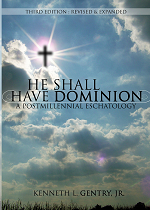
January 24, 2023
THE INTERMEDIATE STATE
PMW 2023-007 by Kenneth L. Gentry, Jr. 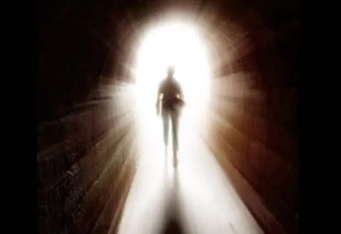
I have long attempted to maintain three fundamental practices in my life: (1) Never engage in a ground war in Asia. (2) Never attempt to go to Chick Fil-A at lunch time (the place is so crowded nobody goes there any more). (3) Never engage in theological debate on Facebook, for you will experientially learn the meaning of “eternity” with unending threads. Yet, I have stumbled and have been tempted above that which I am able. I allowed myself to be drawn into the FB equivalent of eternal life. Woe is me.
One problem (among many!) that one must endure on Facebook is tracing out arguments in long threads of random thoughts by various people at diverse times, then later trying to remember where you saw them. Ugh. So, instead of hunting and finding the thread that dealt with my (Reformed) observation that man is a body-soul complex, I will quickly offer the following in response to those who do not like the idea of a physical resurrection — wherever that thread may now exist. Though, were I of sound mind and body I would simply refer my challengers to any Reformed Systematic Theology.
House Divided: The Break-up of Dispensational Theology By Greg Bahnsen and Ken Gentry
By Greg Bahnsen and Ken Gentry
This book presents and defends Christian Reconstruction theology, particularly theonomic ethics and postmillennial eschatology. It does to by responding to dispensationalism’s social and exegetical theology.
For more educational materials: www. KennethGentry.com
God created man as a body-soul being, i.e., as a physical and spiritual unity (Gen. 2:7). This is the major reason God redeems us by sending his Son in a physical body to die for us (Heb. 2:14–15; 10:5). And this is one reason that the unbeliever is to be judged in soul AND body under the wrath of God in the fullness of his (the unbeliever’s) being (Matt. 10:28). Man exists in his full integrity as God designed him only when body and soul (the physical and spiritual aspects of his being) are united.
Nevertheless, man can and does exist while body and soul are separated. Though the center of man’s being is his soul-spirit, he continues to exist in his spirit after death, when body and soul are separated. Spirits do exist without bodies, which is why Jesus encouraged his disciples after his physical resurrection by saying: “See My hands and My feet, that it is I Myself; touch Me and see, for a spirit does not have flesh and bones as you see that I have” (Luke 24:39). After all, for the Christian “to be ABSENT from the body” is “to be at home with the Lord” in heaven (2 Cor. 5:8). That state of being is rightly called an “intermediate” state, for it is “between” two states of existence. It is temporary and not in keeping with the fullness of God’s creation design and purpose. It is, however, preferable to life in this sinful world (Phil. 1:23; cp. 2 Cor. 5:8).
At death we endure the separation of our soul from our body. During this intermediate time we are waiting for the redemption of our body (Rom. 8:19–23), which will be raised (2 Cor. 4:14) in the future when the whole creation is finally and forever no longer “subjected to futility” in “its slavery to corruption” while it “groans and suffers” (Rom. 8:20–22). This has not happened yet. But it will happen at the end of history (1 Cor. 15:23–26) when our bodies will be transformed from corruptible to incorruptible after we have waited for his return (1 Cor. 15:51–54; Phil. 3:20–21).

Blessed Is He Who Reads: A Primer on the Book of Revelation
By Larry E. Ball
A basic survey of Revelation from an orthodox, evangelical, and Reformed preterist perspective. Ball understands John to be focusing on the destruction of Jerusalem and the temple in AD 70. Insightful. Easy to read.
For more Christian studies see: www.KennethGentry.com
January 20, 2023
POSTMILLENNIALISM IN 1 CORINTHIANS 15
 PMW 2023-006 by Gregg Strawbridge
PMW 2023-006 by Gregg Strawbridge
Gentry note: This paper was originally delivered to 1999 Evangelical Theological Society meeting in Boston. Its original, full title was “An Exegetical Defense of Postmillennialism from 1 Corinthians 15: The Eschatology of the Dixit Dominus.”
Overview
This paper is exegetes Paul’s allusion to the first verse of the Dixit Dominus (Psa 110:1: “The LORD says to my Lord: ‘Sit at My right hand, Until I make Thine enemies a footstool for Thy feet.’” / 1Co 15:25: “For He must reign until He has put all His enemies under His feet.”). It shows that Christ is reigning in the exact sense of this verse during the interadvental period. This study gives special attention to the chronology of the events of 1 Corinthians 15:22–26, supported by the emphatic frequency of the NT teaching that Christ ascended to the “right hand” fullfilling the Dixit Dominus. Significant reflection is given to the chronological argument that death, the last enemy, is overcome at the parousia when those alive will be “changed” (1Co 15:23, cf 15:52-54). The study concludes by noting the difficulties such an exegesis raises for preterist (full preterist), dispensational, premillennial, and pessimistic amillennial eschatologies.
The Dixit Dominus in the NT
The importance of the Dixit Dominus (Psa 110) and particularly the first two verses are paramount. The first verse of Psalm 110 is directly quoted or referred to at least 21 times in the New Testament—more than any other Hebrew Scripture verse. Including references to the later verses of the Psalm in Hebrews (Heb 5:6, 7:17, 7:21, 5:10, 6:20, 7:11, 7:15), the Psalm is referred to some 28 times in the New Testament. It is quite an understatement, then, to say that this passage is highly significant for a theology of Messiah and His kingdom.
The Dixit Dominus in Paul’s Resurrection Defense
One of the most significant theological expositions of Psalm 110:1 is found in 1 Corinthians 15:25 and the context.
For as in Adam all die, so also in Christ all shall be made alive. But each in his own order: Christ the first fruits, after that those who are Christ’s at His coming, then comes the end, when He delivers up the kingdom to the God and Father, when He has abolished all rule and all authority and power. For He must reign until He has put all His enemies under His feet. The last enemy that will be abolished is death. (1Co 15:22–26).
Context and Purpose of 1 Corinthians 15:25–26
The entire chapter of 1 Corinthians 15 is directed to the question of the validity of bodily resurrection, as indicated in 15:12, “some among you say that there is no resurrection of the dead.” In fact, the words for “resurrection” are used 22 times in the passage (15:4–52). In developing his answer Paul provides sequential language, moving from Christ’s resurrection to the “end” (telos). Why does Paul’s defense of resurrection include an explanation involving the kingdom and reign of Christ? Because resurrection regards death, and death is a kingdom enemy. So, Paul must discuss the reign of Christ and invoke kingdom concepts.
 The Harrowing of Hell (by Jay Rogers)
The Harrowing of Hell (by Jay Rogers)
This postmillennial book examines the power of the Gospel, not only to overcome all opposition, but to rise far above the powers of hell. The term “Harrowing of Hell” refers to idea that Christ descended into Hell, as stated in the Apostles’ Creed.
For more Christian educational materials: www.KennethGentry.com
The specific context of 15:25–26 is the origin of death (“for as in Adam all die”), the Messianic deliverance from death (“so also in Christ all shall be made alive”), and the sequence of this deliverance: “But each in his own order: Christ the first fruits, after that those who are Christ’s at His coming.” The term “order” is from the root tagma. The tagma (“proper order”) proceeds in the following manner: Christ was resurrected, “after that” (epeita) the resurrection of “those who are Christ’s at His coming” (parousia) (v. 23), “then comes the end.” Paul is giving a chronological sequence of events in using adverbs epeita and eita which are for “marking the sequence of one thing after another.”
The Telos
The phrase epeita to telos (“then comes the end”) is elucidated by Paul. Contextually, the “end” (telos) is “when He delivers up the kingdom to the God and Father, when He has abolished all rule and all authority and power” (15:24). Thus, the telos is “when” the kingdom is consummated. The “end” is not when the kingdom is initiated, but rather when it is finalized. The idea that the telos is an end period is not warranted by Paul’s grammar, contextual discussion, nor his use of the term. Neither does the syntax support the “end period” concept.
English translations (KJV, NKJV, NASB, RSV, NRSV, and NIV) of eita to telos (“then comes the end”) supply the verb, “comes.” In Greek — no verb. Literally, it is “then the end.” Of the endless variety of verbs, phrases, or terms Paul could have employed to clarify that the telos is a 1000 year period of time, no indication is presented. The “end” is at the time “when” (1) “He delivers up the kingdom to the God and Father,” and at the time when (2) “He has [already or after He has] abolished (katargeo—subjunctive aorist) all rule and all authority and power” (15:24). Note that hotan (“when”) with the subjunctive aorist is correctly rendered “after,” as in the ESV, NRSV, NIV11, NET — “after destroying.” Thus, the second clause is correctly rendered by the NIV as, “after he has destroyed all dominion, authority and power.”
This analysis shows that what is meant by telos is explained by the two hotan clauses. In the first clause, it is strictly contemporaneous: the end is precisely when (“at the time of”) Christ delivers up the kingdom. The kingdom is therefore a reality prior to the “end.” In the second clause, the abolition of all authority has already become a reality – “He will have already [after He] abolished all rule and all authority and power” when the telos comes. The telos or “end” thus temporally follows Christ’s reign since the subjection of his enemies has previously taken place. The “end” (telos) is the consummation of Christ’s kingdom reign. No other rule, power, or authority can persist following the telos because all other authorities have already been subjugated.
The Last Enemy
One could press 15:24 into the service of a variety of eschatological positions as is done in many quarters. However, further consideration of 15:25 and later sections of the chapter make the chronology of the Pauline eschatology more definitive. Paul explains, “For He must reign until He has put all His enemies under His feet” (15:25). There is a prima facia relationship between 1 Corinthians 15:25 and Psalm 110:1b, “Sit at My right hand, until I make Thine enemies a footstool for Thy feet.” Paul uses the word “reign” in place of “sit at My right hand” and portrays Christ as active in the role of subduing His enemies. Conceptually, 15:25, is identical to Dixit Dominus 1: the Lord is ruling until all enemies are subdued. It is important to note the gar (“for”) is “introducing an explanation.” Paul explains the kingdom actions of 15:24 by Christ’s reign. The “reign,” given contextual considerations, is a present reality to Paul.
So, when does the reign of Christ (in the 15:25 sense) take place? Paul gives the chronological “key.” We are told what the “last enemy” is—“death” (15:26) and we are told when (hotan) death is “swallowed up in victory” (15:54) —at the Resurrection at His parousia. Death is “abolished” (katergeo, 15:26) or “destroyed” (KJV, NKJ, NIV, RSV, ASV) “when this perishable will have put on the imperishable and this mortal will have put on immortality” (15:54). The conclusion is forceful and definitive for the millennial chronology debate. Death is the poison of which resurrection is the antidote. Christ officially abolished death at His resurrection (2Ti 1:10, Heb 2:14) and will completely vanquish death at “The Resurrection” (1Co 15:54–55; Joh 5:29). His (millennial) reign, in the terms of the Dixit Dominus, occurs between His resurrection and “The Resurrection” at which time the abolition of death, the last enemy, occurs.
Paul’s rhetoric powerfully establishes that death is overcome at the parousia. In the first image (15:26), death is “abolished” or “nullified” (katergeo cf. 2Co 3:14; Rom 4:14) and in the second context death is not merely “nullified,” it is “swallowed, overcome, destroyed]” (katapino, 15:54) in victory. This rhetorical progression is completely within the structure of the chapter and its theme of resurrection. “All rule and all authority and power” (15:24) will be “nullified” prior to His parousia. Death is the final power to be abolished. So if the last enemy is overcome at the parousia, when believers will be “transformed” and the “dead will be raised” (1Co 15:23 cf 15:52–54), Christ’s reign is interadvental.
Paul’s eschatology is thanatological. Christ’s reign is the ongoing treatment for death in the cosmos and finally it will be cured (in “The Resurrection”). He will certainly overcome all His enemies, the last of which is the most pertinent to the “resurrection” question of chapter 15. Irrespective of our millennial moorings, we should all rejoice that by God’s free grace, because of Christ, through the gospel (15:3–4) one receives this power of God for salvation from death (Eph 2:1–9; 2Ti 1:10)—the effects of which will be gloriously visible at the last day. As the Creed says, “I believe in … the resurrection of the body.”
Some Polemics of Millennial Eschatology
Several polemical points issue forth from this analysis:
1) Preterism is the view that NT prophecies were fulfilled in the past. This view rightly values the importance of the time referents (“this generation,” “quickly,” etc.). Moreover, preterists see the significance of the destruction of Jerusalem (70 Anno Domini) for the Olivet Discourse (Mat 24). Certainly, the exegesis of 15:24–26 excludes full18 preterism (or as it is labeled, “Hymenaeism” [2Ti 2:17–18] or “pantelism”). Unorthodox (full) preterism teaches that even the Second Advent of Christ, the resurrection, etc., took place during the destruction of Jerusalem. Not only is this view unorthodox according to the creeds of the universal Church, East, West, Protestant, and Roman—many full preterist views may be refuted in the text we have considered.
a) While there is no consistent view regarding the resurrection of believers among full preterists, what is common to all is that the Second Advent happened in 70 A.D. On the contrary, the above exegesis requires that, regarding believers, death is abolished for believers following the parousia (of 1Co 15:23). It is untenable, at the very least, to believe that since 70 A.D. death is nullified for believers in any way different than it was for those before, especially for saints during the NT period. It is true that the text does not teach that death is abolished in the sense of no longer existing in any sense (annihilation). This is no doubt because the reality of “death” for the wicked, “the second death” is never annihilated (Rev 21:8). Paul’s resurrection argument (in 1Co 15) never addresses the resurrection of the wicked, though he taught it elsewhere (Acts 24:15). Rather Paul’s discourse requires that no enemies need to be subdued after the parousia, especially death.
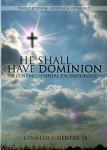
He Shall Have Dominion
(paperback by Kenneth Gentry)
A classic, thorough explanation and defense of postmillennialism (600+ pages). Complete with several chapters answering specific objections.
See more study materials at: www.KennethGentry.com
b) Christ’s resurrection is paralleled with those “at His coming” (15:23). Paul insisted that Christ’s resurrection is the “first fruits” of the resurrection harvest two times (15:20 & 23). This surely requires our resurrection to be of the same kind of harvest, a point that might be exegetically confirmed in elsewhere (Phi 3:21). But full preterism cannot maintain that post-70 A.D. believers’ resurrections will be substantially the same as that of Christ. Paul’s polemic rests, however, on the similarity of Christ’s resurrection and the resurrection of those at His coming. A central point of Paul’s defense is that Christ’s resurrection was verifiable, “He appeared to more than five hundred brethren at one time” (15:6). (To add, if the parousia-transformation-resurrection happened in 70 A.D., what shall we say of believers after that? Is there any biblical teaching which addresses their resurrection-transformation? Full preterism must postulate an unorthodox, radical non-physical understanding of resurrection in order to explain how the resurrection is a past event.)
c) It is evident that the overcoming of enemies and abolition of powers results in an observable change in the world 15:25–26 (cf Heb 2:8). This is confirmed, moreover, by the fact that Paul speaks of a future “when he shall deliver up the kingdom to God” (15:24); a future “when [after] all things are subjected to Him” (15:28); a future “when this perishable will have put on the imperishable” (15:54). Unorthodox preterism requires the orthodox to believe that the actual subjugation of all in the (observable) sense of 15:24–28 became a reality in 70 A.D. But would the Roman Christians of 71 A.D. “see” “all things subjected to him” (Heb 2:8)?
d) Unorthodox preterism requires us to believe that the kingdom of Christ (His reign) lasted only about 37 years. But the concept of a “millennium” is also a time reference to be taken literarily. Milton Terry, rightly relates the kingdom to Jerusalem’s fall: “The entire New Testament teaching concerning the kingdom of Christ contemplates a long period, and the abolishing of all opposing authority and power; ‘for he must reign till he hath put all his enemies under his feet’ (I Cor. xv, 25). The overthrow of Jerusalem was one of the first triumphs of the Messiah’s reign, and a sign that he was truly ‘seated at the right hand of power.’” If full preterism is true, all post-70 A.D. church history (including the 51st Annual ETS meeting), turns out to be after “the end.” This makes church history the encore (?) to the kingdom, rather than the expansion of the kingdom. Thus, we no longer enter the kingdom, proclaim the gospel of the kingdom, are transferred into the kingdom, work for the advance of the kingdom, or pray for Thy kingdom to come. The kingdom is gone (?). So even apart from specific resurrection problems, considering the nature of the kingdom leads us to a full rejection of full preterism.
e) Unorthodox preterism is unsatisfying on the basic worldview level, the level at which Paul frames the discussion of resurrection. When Christians of all sub-creeds affirm, “I believe. . . in the resurrection of the body,” what is being affirmed satisfies a profound worldview demand, the redemption of the body (Rom 8:23) in world which is permeated by death. Will the evil of the world be a perpetual enemy without actual subjugation, world without end, Amen? Unorthodox preterism is unsatisfying too on a theological level; it makes no sense of the perennial kingdom of God motifs, reducing the fullness of that kingdom to less than a generation. Unorthodox preterism is unsatisfying at a biblical theology level, considering the development of sin, death, kingdom, and the advance of the gospel. Unorthodox preterism is unsatisfying on an exegetical level in view of the key didactic passages addressing the Second Advent and resurrection of believers (especially 1Co 15:22–26 & 1Th 4:16–17). . . .
Gentry note: To read the full article including footnotes, go to: Academia.org
January 17, 2023
IRREFUTABLE REFUTATION OF HYPER-PRETERISM
PMW 2023-005 by Jason L. Bradfield
Gentry note: Jason once adopted Hyper-preterism as his theological commitment. He has sense left the movement to become part of mainstream Reformed evangelical thought. This is an excellent article by a former insider.
INTRODUCTION
For starters, let’s define some terms. By “hyper-preterism,” I include any belief system that argues for the past fulfillment of all prophecy, which necessarily includes the general resurrection of the dead. Whether a system is labeled “full-preterism,” “pantelism,” or “covenant eschatology,” it makes no difference to this refutation. I can not care less what any of these systems positively state regarding the general resurrection. At one time, I counted at least six different views among them. They can hash out their heretical opinions amongst themselves. But what they all have in common is that an “all-is-fulfilled eschatology” must of necessity deny a general, self-same, bodily resurrection.
The purpose of this post is to demonstrate beyond any reasonable doubt that this same denial existed among a few at the church in Corinth, and in I Corinthians 15, esp. verses 12-18, Paul destroys their false belief. Paul affirms belief in the bodily resurrection, and since this has not occurred, it remains a prophecy yet to be fulfilled.
Some of my readers may be unfamiliar with this chapter, so let me set this up. The letter of 1 Corinthians is a corrective epistle by the Apostle Paul, designed to correct numerous problems in their church, including but not limited to misuse of the Lord’s Supper, cliques, abuse of spiritual gifts, and sexual immorality. When we reach chapter 15, Paul addresses a false belief held by some that the “dead are not raised.” We know this to be the case because of verse 12b, where Paul asks, “how can some of you say that there is no resurrection of the dead?” Hyper-preterists agree that some in Corinth denied the “resurrection of the dead,” but the nature of the resurrection is questioned.
Why Not Full-Preterism? by Steve Gregg
This work exposes some of the key flaws in Hyperpreterism by someone who has formally debated them. Much insightful material for those who might be tempted to forsake historic Christian orthodoxy.
For more Christian educational materials: www.KennethGentry.com
THE CORINTHIAN ERROR
I will now prove to you that what this small group in Corinth was denying was a self-same, bodily resurrection.
First, I want to draw your attention to how Paul starts his defense:
Verse 1. Now I would remind you, brothers, of the Gospel I preached to you, which you received, in which you stand, 2 and by which you are being saved, if you hold fast to the word I preached to you—unless you believed in vain. 3 For I delivered to you as of first importance what I also received: that Christ died for our sins in accordance with the Scriptures, 4 that he was buried, that he was raised on the third day in accordance with the Scriptures, 5 and that he appeared to Cephas, then to the twelve. 6 Then he appeared to more than five hundred brothers at one time, most of whom are still alive, though some have fallen asleep. 7 Then he appeared to James, then to all the apostles. 8 Last of all, as to one untimely born, he appeared also to me….11 Whether then it was I or they, so we preach and so you believed.
Notice a couple of things from this:
1. Note the essential elements of the Gospel that Paul highlights to begin his defense. The Gospel consisted of Christ’s physical death for our sins, the burial of that same body, and the physical resurrection of that same body. Everything highlighted here by Paul involves the physical body of Christ.
2. Note that Paul informs the Corinthians that hundreds, if not thousands, witnessed a bodily resurrected Christ. And just in case you doubt the nature of Jesus’ resurrected body, Lk 24 reminds you:
…they were startled and frightened and thought they saw a spirit. 38 And he said to them, “Why are you troubled, and why do doubts arise in your hearts? 39 See my hands and my feet, that it is I myself. Touch me, and see. For a spirit does not have flesh and bones as you see that I have.” 40 And when he had said this, he showed them his hands and his feet.
Paul does not want you, the reader, to miss the undeniable fact that Jesus physically died, was buried, and bodily resurrected from the grave; and hundreds of people could attest to that fact.
3. Note that Paul reminds them that this Gospel, which includes the essential doctrine of the bodily resurrection of Christ, is the Gospel with “you received, in which you stand, and by which you are being saved, if you hold fast to the word I preached….”
Here is an important observation: these resurrection deniers did not deny the bodily resurrection of Christ! What they refused, for various reasons, was that the rest of the dead would be resurrected. Because they believed in the bodily resurrection of Christ, Paul is now able to capitalize on that shared belief and demonstrate that if they deny resurrection for the rest of the dead, they must of necessity reject that which they accepted – the bodily resurrection of Christ.
PAUL’S INSISTENCE OF THE RESURRECTION
Paul hammers this home a couple of times:
12 Now if Christ is proclaimed as raised from the dead, how can some of you say that there is no resurrection of the dead? 13 But if there is no resurrection of the dead, then not even Christ has been raised.
He argues again in v 16:
For if the dead are not raised, not even Christ has been raised. 17 And if Christ has not been raised, your faith is futile and you are still in your sins.
And herein lies the undeniable proof that the resurrection that this “some” in Corinth were denying was of a self-same, bodily nature.
First, note that Paul’s primary argument against these deniers was to establish a LOGICAL, thus NECESSARILY IMPLIED, relationship between the “resurrection of the dead” with the “resurrection of Christ.” It is the LOGICAL relationship between these two beliefs which constitutes the force of Paul’s argument. If we were to convert Paul’s words to the language of logical forms, Paul is essentially arguing in verses 13 and 16 that “if it is true that ‘No A is B,’ then it cannot be true that ‘Some A is B.’”
Now, I could spend a great deal of time getting into a technical explanation of logic, propositional forms, immediate inferences, and syllogisms. But I don’t want to lose some readers. The basic idea is straightforward here. Anyone can grasp this. Let’s put it in plain English:
If a person is claiming that no one can rise from the dead, he is claiming that the resurrection of the dead is UNIVERSALLY impossible. No one can do it. There are no exceptions. And if that is true, then obviously it cannot be true at the same time that a PARTICULAR person can raise from the dead; because now you are making the exception and contradicting yourself. Either no one can do it, or some can. It cannot be both. And the flip side to it is this; if it is true that Jesus rose from the dead, which these deniers accepted, it is false to say that “no one” can rise from the dead. Simple, right?
Have We Missed the Second Coming: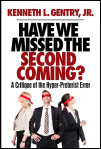
A Critique of the Hyper-preterist Error
by Ken Gentry
This book offers a brief introduction, summary, and critique of Hyper-preterism. Don’t let your church and Christian friends be blindfolded to this new error. To be forewarned is to be forearmed.
For more Christian educational materials: www.KennethGentry.com
Secondly, having demonstrated the logical relationship between the two propositions, let us now consider an essential component of logical connections. For Paul’s logical argument to work, his terms have to mean the same thing throughout! Because if a word or phrase means different things in an argument, then the propositions are talking about two different things, and thus the relationship is broken. In logic, this is the fallacy known as equivocation. If “resurrection of the dead” for the general populace does not mean the same thing that “resurrection of the dead” means regarding Jesus, then Paul’s logical argument loses support!
Imagine this: Suppose you argue that, “No man can jump 100ft in the air solely on his own muscle power.” And then a challenger comes along and says, “Hogwash! My brother jumped 150ft in the air!”
“Prove it,” you say. So the guy drives home, picks up his brother, and returns to you.
“Alright, let’s see you jump.”
The guy then slips on some futuristic rocket boots by NASA, jumps about a foot high, triggering the thrusters, and launches 150ft into the air.
Did he prove it? OF COURSE NOT. Why? Because jumping with rocket boots is NOT the same thing as jumping “solely on your own muscle power.”
Those are two different things. You didn’t argue that no one could do it with NASA rocket boots. You argued that no one could do it “solely on their own power.”
Again, simple, right?
PAUL’S LOGICAL ARGUMENT
Paul’s LOGICAL argument is that if we are going to claim that no one, universally, can rise from the dead, then it is impossible for Jesus, a particular example within that universal, to have risen from the dead.
The force of Paul’s argument rests in these two points: (1) he establishes a logical relationship between the “resurrection of Christ” with the “resurrection” of other dead people and (2) whatever is meant by “resurrection” must mean the same thing throughout the argument for the argument to work. And since the self-same, bodily resurrection of Christ is clearly in view, then the self-same, bodily “resurrection of the dead,” is what is in contention for the rest of the dead.
We can paraphrase Paul in this manner to bring out fully his meaning:
If dead bodies can not resurrect, then it logically follows that Christ’s dead body did not resurrect.
And folks, if that is true, then, as Paul goes on to explain, all those who witnessed and spoke of the resurrected Christ were liars. You might as well chunk your Bible. But the bodily resurrection of the dead is not impossible. And Exhibit A is Jesus Christ himself, who not only bodily resurrected, but was seen by hundreds, if not thousands, and was the “firstfruit of those fallen asleep.” (v. 20)
There is no other way to understand Paul’s words here….
To continue reading, click: here
Jason L Brafield is the president of Whitefield Theological Seminary in Lakeland, Florida.
January 13, 2023
UP AND OUT OF HYPER-PRETERISM
PMW 2023-004 by Zachary J. Easton
Gentry note: Zach has contacted me regarding his disaffection with Hyper-preterism/Full Preterism. He sent me his testimony which I appreciated and was encouraged by. I invite others who have been converted out of Hyper/Full Preterism to send me their testimonies.
Testimony of Zach Easton:
During my childhood, the doctrine that was most emphasized was the rapture. Growing up, I feared being left behind. Anytime there was silence for too long I would wonder to myself: “Did I miss it?” “Were the planes going to start falling from the sky?” “Were the cars on the road going to start piling up?” “Was I going have to survive hell on planet earth for seven years while the antichrist hunts me down?” I was terrified! Then I would go outside just to find that my mom was pulling weeds and that all was well. But to be on the watch, I would stay up to date constantly to see what was happening in the Middle East so I would be “rapture ready.”
In high school, it all changed, and I was going to go from one extreme to another! I was in study hall my junior year in high school, and I was reading Matthew chapters 24–25. I went and read the other synoptic passages of the Olivet discourse (Mark 13 and Luke 21) and had a culture shock when I read that in all chapters it read: “this generation will not pass away until all ‘these’ things take place.” So, I started to do more research and discovered that there are numerous people that largely believed that most of the Olivet Discourse was fulfilled in AD 70. I wondered to myself: “why have I never heard of this before?”
About a year later, my senior year in high school, I came across a guy named Don K. Preston. He was doing a series on the Olivet Discourse at the time so I listened to all his videos on YouTube and bought the books he offered. About a month later I started identifying as a full preterist and could not stop talking about AD 70. My newfound theology lifted a weight off of me.
Have We Missed the Second Coming:
A Critique of the Hyper-preterist Error
by Ken Gentry
This book offers a brief introduction, summary, and critique of Hyper-preterism. Don’t let your church and Christian friends be blindfolded to this new error. To be forewarned is to be forearmed.
For more Christian educational materials: www.KennethGentry.com
With no imminent rapture to keep me on guard along with making the recorded events more relatable, the Bible seemed more complete … or so I thought. Everything was in the past, what was there to worry about?
DESTRUCTION OF THE INCARNATION
What I did not realize was that should be worried about the implications of this historic heresy. The first implication that hyper-preterism has and the primary reason why I left, was that Christ is no longer in the flesh, which in some way is the spirit of Antichrist (1 John 4: 2–3; 2 John 1:7). The second implication, because of the first implication, is that there is no longer a hypostatic union. Without Christ being in the flesh, He cannot be one-hundred percent man one-hundred percent God. Christ came in the flesh to restore mankind to the image of God (Colossians 3:10; Ephesians 4:24). Christ ascended bodily into heaven (Acts 1:9–11) so that He can be our mediator of a new and better covenant. Therefore, by faith, we can unite to Christ, both in his humanity, following him as humans, and in his divinity, being partakers of the divine nature (2 Peter 1:4). If Christ is not in heaven bodily, why look up to heaven since He is a disembodied spirit? Also, since He will let humanity suffer forever and never destroy sin, this must be the goal of His redemption. But Scripture is clear that this is not the case.
Since Christ is in heaven, our heads can be where our heart is at. As St. Paul says in Colossians 3:1 “Therefore if you have been raised up with Christ, keep seeking the things above, where Christ is, seated at the right hand of God.” St. Paul is saying that since Christ is located at the right hand of the Father, set your hope there. Our focus and our hope are where Christ is bodily. This then leads me to the verse that the Holy Spirit used for me to leave hyper-preterism.
Philippians 3:20–21 says: “For our citizenship is in heaven, from which we also eagerly wait for a Savior, the Lord Jesus Christ, who will transform the body of our lowly condition into conformity with His glorious body, by the exertion of the power that He has even to subject all things to Himself.” What stood out to me were these two phrases: “body of our lowly condition” and “His glorious body.” I pondered, “what do these look like?”
In context Paul was telling them to lift their minds to heaven and then proceeded to tell them that this body is but a frail tabernacle, susceptible to suffering, disease, hunger and misery and will be reduced to nothing. Where is our restoration? Our restoration is from heaven, at the return of Christ when He comes in His glory. The body that Christ had at the transfiguration. The body that Peter bore witness to and described in his second epistle. The body at the Mount of Transfiguration, the body that the disciples could hardly endure, and as a result fell and were afraid (Matt 17:6), Paul said that we will put on. The only way to get around this glorious reality is to deny Christ being bodily in heaven.
 Why I Left Full-Preterism (by Samuel M. Frost)
Why I Left Full-Preterism (by Samuel M. Frost)
Former leader in Full Preterist movement, Samuel M. Frost, gives his testimony and theological reasoning as to why he left the heretical movement. Good warning to others tempted to leave orthodox Christianity.
See more study materials at: KennethGentry.com
This implication brings a new, yet false, gospel to be preached. This undermines Christ’s role as our great high priest. The high priest had to go, in the flesh, before the presence of God and sprinkle blood on the holy of holies. Likewise, Christ entered into the Holy of Holies made without hands by His own blood. If Christ is not bodily in heaven, as the hyper preterist must maintain, then the incarnation is over! If the second coming happened in AD 70, then Christ mediating for the sins of His people is then over. This then means that Christ was concerned
about Israel only. Everyone is now saved who will ever be saved. This means that no one is saved at all. This then would conclude that baptism, communion and evangelism and worship are not for today as well. So much for a gospel message!
HELP FOR THOSE CAUGHT UP IN HYPER-PRETERISM
I then realized that hyper preterism was untenable. I did not know what to do, so I prayed and asked for forgiveness. I then went and told people to whom I taught this doctrine that I was sorry and told them about the evil behind it. The older I get the more repugnant the system is for me, for it robs God of His glory and robs man of any future hope that may be in Christ. One thing I
tell people to safeguard them from this error are the words of Doug Wilson. He once said: “preterism explains very nicely and the problem with preterism is that it is like a new hammer and you see everything as a nail and because it has a great explanatory power, and it does, some people have gone into what people call full preterism.”
Here are some of my personal thoughts on how to safeguard yourself as an orthodox preterist. So, what are some “nails” that shouldn’t be hammered besides the obvious ones such as the future bodily resurrection of believers, the future bodily coming of Christ and the restoration of all things? After reading some articles by Kenneth Gentry, I believe the “this age” and the “age to come” theme of scripture must be properly understood. The resurrection comes at the end (1 Corinthians 15:24). Jesus’ focal point of eschatology is this age and the age to come. Jesus said that “in the age to come” we would be like the angels and shall not die (Luke 20:36). Christ refers to the “age to come” as the time in which the resurrection would take place (Matthew 22:29–32). He says how, in the resurrection, they are like the angels and can no longer die. It is in the Nicene Creed that we say: “and we look forward to the resurrection of the dead and the life of the age to come.” If one is to say that the “age to come” was in the year AD 70, he would have to redefine death. Then he would have to redefine resurrection along with the nature of angels in order to be consistent. At this point you are knocking at hyper-preterism’s door!
I am Zachary J. Easton, and this is my testimony on hyper-preterism.
Kenneth L. Gentry Jr.'s Blog
- Kenneth L. Gentry Jr.'s profile
- 85 followers



